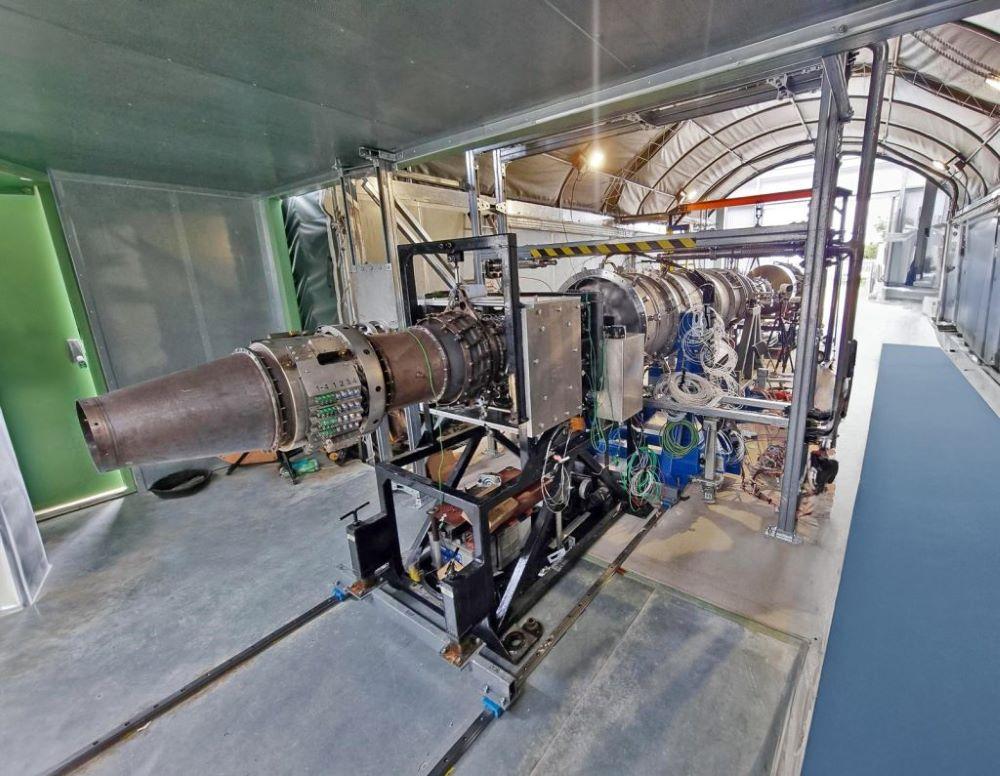This article is published in Aviation Week & Space Technology and is free to read until Aug 21, 2024. If you want to read more articles from this publication, please click the link to subscribe.

COLORADO SPRINGS—High-speed propulsion and heat transfer specialist Reaction Engines has successfully ground tested its precooler with a modified Rolls-Royce engine to Mach 3.5 conditions, marking a milestone for potential UK plans to develop a hypersonic aircraft.
The tests are believed to form part of the Royal Air Force’s reusable Hypersonic Air Vehicle Experimental (HVX) program, though this is not confirmed by the company. Reaction says only that the precooler was “integrated and close-coupled with a modified Rolls-Royce jet engine to simulate a propulsion system for an unpiloted, reusable high-Mach air vehicle concept.”
The company adds that the test program initially evaluated the system at sustained Mach 2.3 operating conditions. The flow conditions were then stepped up to represent Mach 3.5 pressures and temperatures “matching the maximum known airspeed record of the SR-71, the world’s fastest aircraft powered by an air-breathing engine.”
The tests, which took place at a high temperature flow facility operated by UK-based S&C Thermofluids, therefore represent a concrete step toward the RAF’s ambitious HVX plan to develop technology for reusable Mach 5-plus vehicles for the 2030s. Unveiled in 2022, the HVX project includes Reaction Engines, Rolls-Royce, the RAF’s Rapid Capabilities Office and the UK government’s Defense Science and Technologies Laboratory, with support from the UK National Security Strategic Investment Fund.
The HVX project has maintained a low profile since it was announced but was built on an earlier initiative announced in 2019 by the UK Defense Ministry, which provided £10 million ($12 million) to research and develop hypersonic propulsion systems for increased aircraft performance and capability. The study at that time focused on adapting an EJ200 Eurofighter Typhoon engine with a Reaction Engines precooler.
The latest test utilized a modified Rolls-built Gnome gas turbine. Although originally built as a turboshaft, the engine has been converted to operate as a gas generator in the rig by removing the power turbine and modifying the nozzle guide vanes.
Although Reaction Engines previously evaluated a slightly larger version of the precooler at Mach 5 conditions during the HTX test campaign in Colorado in 2019, the more recent work also represents the first time an engine has been run with a fully integrated precooler configuration. The design includes a special close coupling between the outflow of the precooler and the fan face of the compressor inlet, and proved the downstream flow from the heat exchanger did not cause any inlet distortion, resonance or other instabilities.
Reaction Engines adds that it “is developing and testing novel high-Mach intake designs and technology for hypersonics capabilities. Hardware is currently being manufactured and assembled for a full-scale ground-based high-Mach thermomechanical test. Subscale aerodynamic wind-tunnel testing is already being undertaken to assess intake performance over a range of supersonic conditions.”
Although no firm details of the proposed baseline HVX combined-cycle engine have been released, the concept is expected to consist of a gas turbine core integrated with the Reaction precooler system. The turbine will be used to propel the vehicle from a standing start on the runway to a mode transition speed—likely in the Mach 3-plus range—upon which the engine will be cocooned and thrust provided by a ramjet/ramburner. Reaction is believed to be exploring the potential use of the turbine and precooler, even after isolating it, to provide thermal control and power for onboard systems and weapons.





